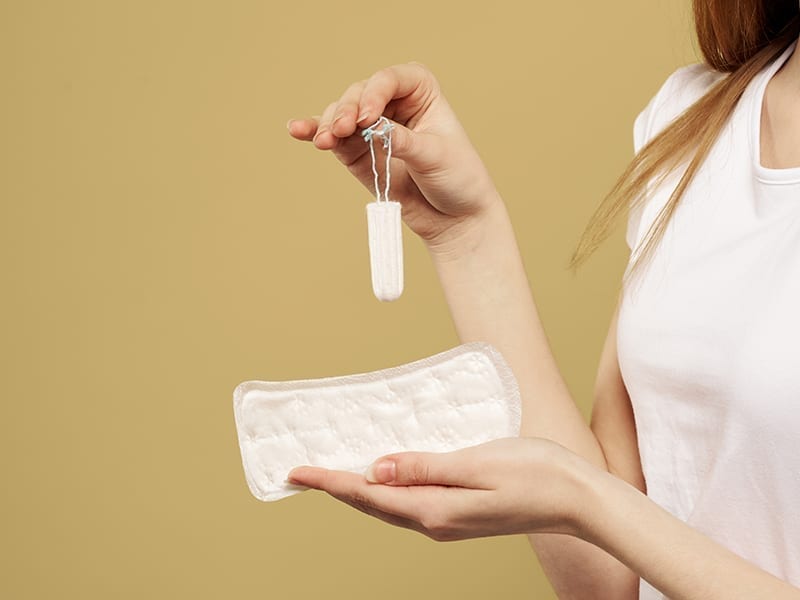If you’ve ever transitioned from a sanitary napkin to a tampon, you definitely remember the first time you tried it. Unlike pads, tampons are so comfortable, it’s easy to forget you’re using one. But there is one unpredictable risk that tampons carry—toxic shock syndrome (TSS). So how do you maintain hygiene, practise caution and take care of your body to eliminate the risk of TSS?
TC46 got in touch with Dr Sandeep Patil, Chief Intensivist at Fortis Hospital in Mumbai. He shares information on the causes of TSS, the diagnostic process and the complications that can arise due to this condition.
1. What is toxic shock syndrome and how does it affect women?
Toxic Shock Syndrome is a life-threatening condition that is triggered due to bacterial toxins produced by Staphylococcus Aureus and Streptococcus Aureus infection. It usually affects women using super-absorbent tampons and contraceptive devices.
2. Which are the main types of bacteria that can cause toxic shock syndrome?
The main types of bacteria responsible for TSS are:
- Staphylococcus Aureus
- Streptococcus Aureus
Did You Know?
The management of TSS should be aggressive and immediate, making visits to the Gynaecologist is a must for all menstruating girls and women.
3. What are the major causes of TSS and how does it happen? Can pads cause TSS?
Toxic Shock Syndrome is caused by superantigen toxin TSS Toxin 1, which is produced by Staphylococcus Aureus or Streptococcus. It is seen amongst women who wear pads and tampons for prolonged durations, causing infections. This especially entails synthetic sanitary products which can cause this condition.
4. What are the signs and symptoms of TSS? How is it diagnosed?
The signs and symptoms of Toxic Shock Syndrome include:
- Fever
- Diarrhoea
- Vomiting
- Myalgia (muscle pain)
- Low blood pressure
- Skin desquamation
- Renal failure
- Confusion
It can be diagnosed with astute history taking, identification of signs and symptoms, blood culture, and pus or wound swab culture.
5. What are the treatment options for TSS?
Treatment options for TSS include:
- Intravenous fluids
- Antibiotics
- Incision and drainage of abscess
- Intravenous immunoglobulin
6. What are some short-term and long-term effects of TSS?
Toxic Shock Syndrome can cause multi-organ failure. Its short-term complications include:
- Respiratory failure
- Renal failure
- Liver cell failure
- Skin peeling
Long term complications include:
- Muscle weakness
- Psychological issues like memory loss, poor concentration, stress disorder
It is vital to note that most patients recover well.
7. What are some ways to prevent TSS?
Toxic Shock Syndrome can be avoided by maintaining menstrual hygiene and avoiding super-absorbent tampons.
Did You Know?
The overall risk of death is about 50% in streptococcal disease, and 5% in staphylococcal disease.
8. What are some ways to create awareness about TSS?
We must give more impetus to creating awareness about Toxic Shock Syndrome by educating the community, and maintaining menstrual hygiene. One must consult their Gynecologist regularly to talk about menstrual hygiene and choice of menstrual products.
TC46 Shares Vital Tips For Toxic Shock Syndrome
- Consider using sanitary pads instead of tampons during menstrual periods or use pads at night.
- Switching from tampons to pads every other day or during the times that the menstrual flow is heaviest may also help to reduce risk.
- Women who use tampons during their menstrual periods should change them often. Tampons should be changed at least every four to eight hours. If the flow is heavy, tampons may have to be changed more frequently.
- Use a tampon with the lowest absorbency required for your flow.
- Do not use tampons when you are not menstruating.
- Women who have recovered from a case of toxic shock syndrome should avoid using tampons during menstrual periods. Toxic shock syndrome is more likely to recur in women who have had it.
- Make sure surgical incisions are kept clean to avoid infection. See your doctor if you notice unusual swelling, redness or heat near the wound.
- Follow directions when using vaginal contraceptives such as sponges or diaphragms.

